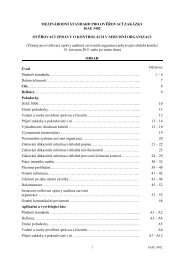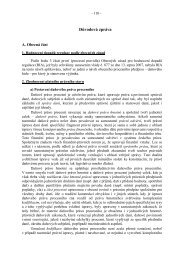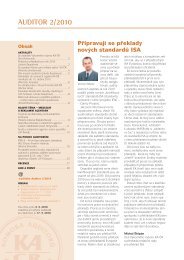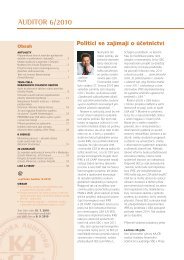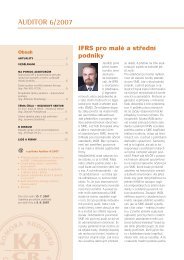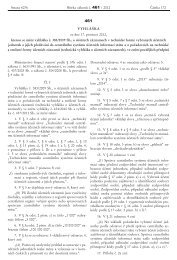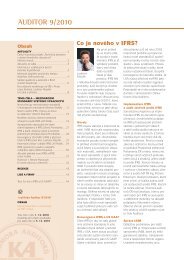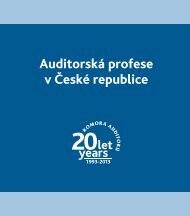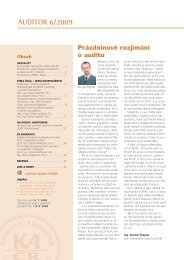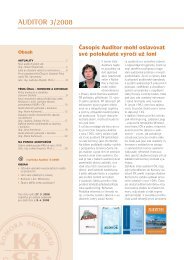Guide to Using International Standards on Auditing in - IFAC
Guide to Using International Standards on Auditing in - IFAC
Guide to Using International Standards on Auditing in - IFAC
Create successful ePaper yourself
Turn your PDF publications into a flip-book with our unique Google optimized e-Paper software.
100<br />
<str<strong>on</strong>g>Guide</str<strong>on</strong>g> <str<strong>on</strong>g>to</str<strong>on</strong>g> <str<strong>on</strong>g>Us<strong>in</strong>g</str<strong>on</strong>g> <str<strong>on</strong>g>Internati<strong>on</strong>al</str<strong>on</strong>g> <str<strong>on</strong>g>Standards</str<strong>on</strong>g> <strong>on</strong> <strong>Audit<strong>in</strong>g</strong> <strong>in</strong> the Audits of Small- and Medium-Sized Entities Volume 1—Core C<strong>on</strong>cepts<br />
CONSIDER POINT<br />
Do not c<strong>on</strong>f<strong>in</strong>e your questi<strong>on</strong>s (especially <strong>in</strong> smaller audits) <str<strong>on</strong>g>to</str<strong>on</strong>g> the owner-manager and the accountant.<br />
Ask other employees (if any) <strong>in</strong> the entity (such as the sales manager, producti<strong>on</strong> manager, or other<br />
employees) about trends, unusual events, major bus<strong>in</strong>ess risks, the functi<strong>on</strong><strong>in</strong>g of <strong>in</strong>ternal c<strong>on</strong>trol, and<br />
any <strong>in</strong>stances of management override.<br />
If a possible fraud <strong>in</strong>volv<strong>in</strong>g senior management or those charged with governance is discovered,<br />
c<strong>on</strong>sult immediately with the engagement partner, and c<strong>on</strong>sider obta<strong>in</strong><strong>in</strong>g legal advice <strong>on</strong> how <str<strong>on</strong>g>to</str<strong>on</strong>g><br />
proceed. The <strong>in</strong>formati<strong>on</strong> should also be kept c<strong>on</strong>fidential <str<strong>on</strong>g>to</str<strong>on</strong>g> ensure that privacy and c<strong>on</strong>fidentiality<br />
requirements are properly followed. Also check the code of ethics for any additi<strong>on</strong>al requirements and<br />
guidance.<br />
8.5 Analytical Procedures<br />
Analytical<br />
Procedures<br />
Analytical procedures used as risk assessment procedures help <str<strong>on</strong>g>to</str<strong>on</strong>g> identify matters that have f<strong>in</strong>ancial<br />
statement and audit implicati<strong>on</strong>s. Some examples are unusual transacti<strong>on</strong>s or events, amounts, ratios, and<br />
trends.<br />
In additi<strong>on</strong> <str<strong>on</strong>g>to</str<strong>on</strong>g> be<strong>in</strong>g a risk assessment procedure, analytical procedures can also be used as further audit<br />
procedures <strong>in</strong>:<br />
• Obta<strong>in</strong><strong>in</strong>g evidence about a f<strong>in</strong>ancial statement asserti<strong>on</strong>. This would be a substantive analytical<br />
procedure and is discussed <strong>in</strong> further detail <strong>in</strong> Volume 1, Chapter 10 of this <str<strong>on</strong>g>Guide</str<strong>on</strong>g>; and<br />
• Perform<strong>in</strong>g an overall review of the f<strong>in</strong>ancial statements at, or near, the end of the audit.<br />
Most analytical procedures are not very detailed or complex. They often use data aggregated at a high level,<br />
which means the results can <strong>on</strong>ly provide a broad <strong>in</strong>itial <strong>in</strong>dicati<strong>on</strong> about whether a material misstatement<br />
may exist.




